Related Research Articles

A steamship, often referred to as a steamer, is a type of steam-powered vessel, typically ocean-faring and seaworthy, that is propelled by one or more steam engines that typically move (turn) propellers or paddlewheels. The first steamships came into practical usage during the early 1800s; however, there were exceptions that came before. Steamships usually use the prefix designations of "PS" for paddle steamer or "SS" for screw steamer. As paddle steamers became less common, "SS" is assumed by many to stand for "steamship". Ships powered by internal combustion engines use a prefix such as "MV" for motor vessel, so it is not correct to use "SS" for most modern vessels.

SS Savannah was an American hybrid sailing ship/sidewheel steamer built in 1818. She was the first steamship to cross the Atlantic Ocean, transiting mainly under sail power from May to June 1819. In spite of this historic voyage, the great space taken up by her large engine and its fuel at the expense of cargo, and the public's anxiety over embracing her revolutionary steam power, kept Savannah from being a commercial success as a steamship. Originally laid down as a sailing packet, she was, following a severe and unrelated reversal of the financial fortunes of her owners, converted back into a sailing ship shortly after returning from Europe.

The Fairfield Shipbuilding and Engineering Company, Limited was a Scottish shipbuilding company in the Govan area on the Clyde in Glasgow. Fairfields, as it is often known, was a major warship builder, turning out many vessels for the Royal Navy and other navies through the First World War and the Second World War. It also built many transatlantic liners, including record-breaking ships for the Cunard Line and Canadian Pacific, such as the Blue Riband-winning sisters RMS Campania and RMS Lucania. At the other end of the scale, Fairfields built fast cross-channel mail steamers and ferries for locations around the world. These included ships for the Bosporus crossing in Istanbul and some of the early ships used by Thomas Cook for developing tourism on the River Nile.
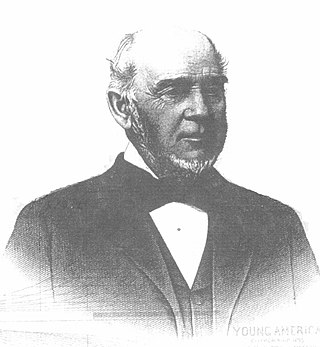
William Henry Webb was a 19th-century New York City shipbuilder and philanthropist, who has been called America's first true naval architect.
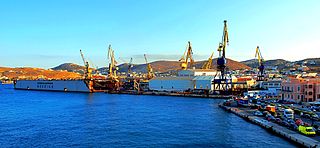
Neorion is one of the oldest Greek heavy industries, located in Ermoupolis, on the Greek island of Syros. Today, it is one of the few remaining major industrial corporations in what used to be the industrial and commercial center of Greece, before being eclipsed by Piraeus in the late 19th century.
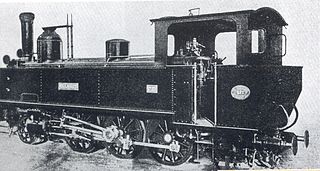
Basileiades was one of the most historic Greek machine building companies and the largest in its field in the country during the second half of the 19th century. It was founded in Piraeus in 1859, and along with similar companies like Ifaistos and Kouppas in the same city, Neorion in Syros, Vlahanis-Petropoulos in Athens, Glavanis-Kazazis in Volos and others founded in the 19th century, mark the contribution of the machine building sector in the Greek Industrial Revolution. The company has also been one of the largest shipyards in Greece, especially during the first half of the 20th century.
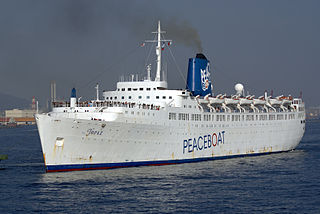
RMS Empress of Britain was a transatlantic ocean liner built by Fairfield Shipbuilding at Govan on the Clyde in Scotland in 1955-1956 for Canadian Pacific Steamships (CP). This ship — the third of three CP vessels to be named Empress of Britain — regularly traversed the trans-Atlantic route between Canada and Europe until 1964, completing 123 voyages under the Canadian Pacific flag.

Robert Napier was a Scottish marine engineer known for his contributions to Clyde shipbuilding.
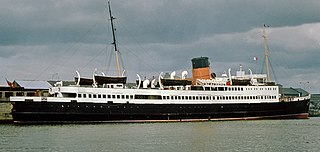
Turbine Steam Ship (RMS) Manxman was a passenger ferry launched from the Cammell Laird shipyard, Birkenhead, on 8 February 1955. She was the final vessel in a class of six similar ships, the Six Sisters, ordered by the Isle of Man Steam Packet Company, and was the second of the Company's ships to carry this name. She was withdrawn from service in 1982. Following a failed preservation attempt, and featuring in a music video in the process, the ship was broken up at Sunderland in 2012.

The Morgan Iron Works was a 19th-century manufacturing plant for marine steam engines located in New York City, United States. Founded as T. F. Secor & Co. in 1838, the plant was later taken over and renamed by one of its original investors, Charles Morgan.


The Schichau-Werke was a German engineering works and shipyard based in Elbing, Germany on the Frisches Haff of then-East Prussia. It also had a subsidiary shipyard in nearby Danzig. Due to the Soviet conquest of eastern Germany, Schichau moved to Bremerhaven in March 1945, and its successors continued in business until 2009.
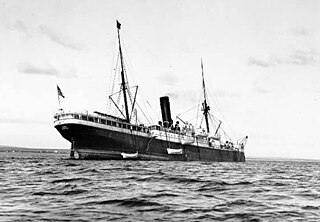
SS Ohio was an iron passenger-cargo steamship built by William Cramp & Sons in 1872. The second of a series of four Pennsylvania-class vessels, Ohio and her three sister ships—Pennsylvania, Indiana and Illinois—were the largest iron ships ever built in the United States at the time of their construction, and amongst the first to be fitted with compound steam engines. They were also the first ships to challenge British dominance of the transatlantic trade since the American Civil War.

SS Indiana was an iron passenger-cargo steamship built by William Cramp & Sons in 1873. The third of a series of four Pennsylvania-class vessels, Indiana and her three sister ships – Pennsylvania, Ohio and Illinois – were the largest iron ships ever built in the United States at the time of their construction, and among the first to be fitted with compound steam engines. They were also the first ships to challenge British dominance of the transatlantic trade since the American Civil War.

The Etna Iron Works was a 19th-century ironworks and manufacturing plant for marine steam engines located in New York City. The Etna Works was a failing small business when purchased by ironmolder John Roach and three partners in 1852. Roach soon gained full ownership of the business and quickly transformed it into a successful general-purpose ironworks.
The Delaware River Iron Ship Building and Engine Works, was a major late-19th-century American shipyard located on the Delaware River in Chester, Pennsylvania. It was founded by the industrialist John Roach and is often referred to by its parent company name of John Roach & Sons, or just known as the Roach shipyard. For the first fifteen years of its existence, the shipyard was by far the largest and most productive in the United States, building more tonnage of ships than its next two major competitors combined, in addition to being the U.S. Navy's largest contractor. The yard specialized in the production of large passenger freighters, but built every kind of vessel from warships to cargo ships, oil tankers, ferries, barges, tugs and yachts.

The Ocean ships were a class of sixty cargo ships built in the United States by Todd Shipyards Corporation during the Second World War for the British Ministry of War Transport under contracts let by the British Purchasing Commission. Eighteen were lost to enemy action and eight to accidents; survivors were sold postwar into merchant service.
Lawrence & Foulks was a 19th-century American shipbuilding company based in New York. Established in the early 1850s, the company built 144 vessels of all types over the course of some fifty years, but is best known for its production of high-speed wooden-hulled steamboats and steamships. Notable vessels built by the company include the record-breaking Hudson River steamboat Chauncey Vibbard, the luxury Long Island Sound steamer Commonwealth, and the fast oceangoing steamships—later U.S. Navy gunboats—Bienville and De Soto. In addition to the domestic market, the company also built ships for service as far afield as South America and China.

Camosun was a steamship built in 1904 in Paisley, Scotland which served in British Columbia.

Chasina was an iron-hulled, steam-powered ship, originally built as a steam yacht, but later converted to a passenger-freighter vessel that served in coastal British Columbia and other areas during the early decades of the 1900s under the ownership several different companies. The ship disappeared in 1931 after leaving Hong Kong.
References
- Skartsis, L.S. (2012). Greek Vehicle & Machine Manufacturers 1800 to present: A Pictorial History (eBook). Marathon. ISBN 978-960-93-4452-4.